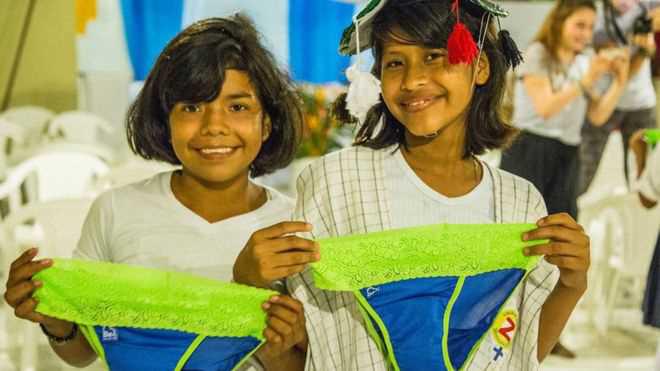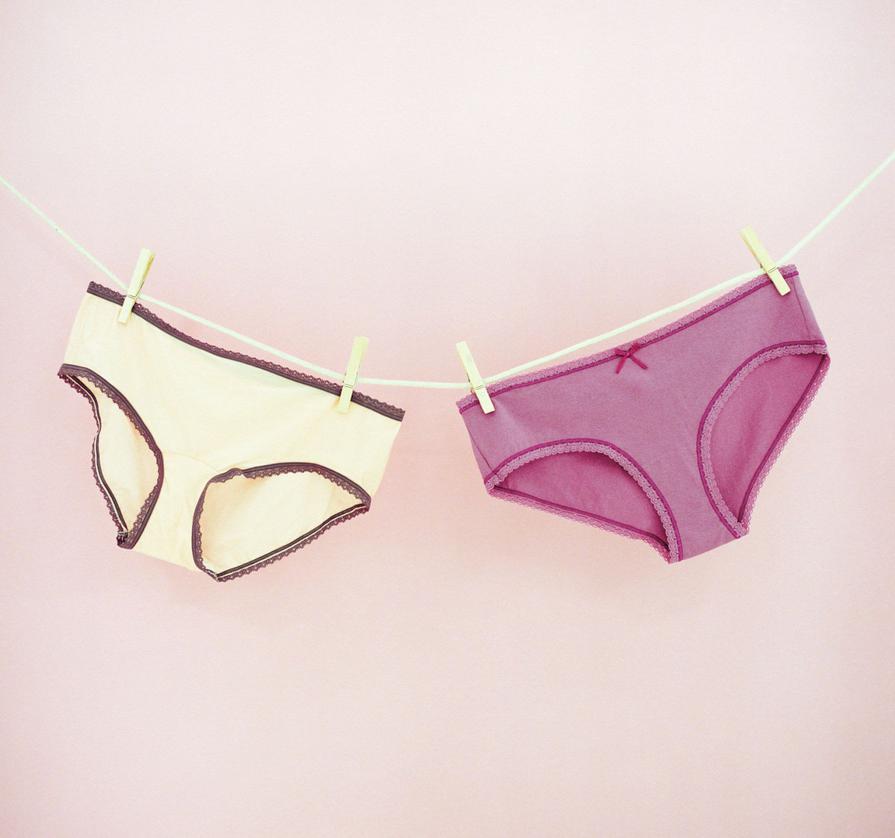Diana Sierra got her period when she was 12 years old. Before that age, her days were spent on excursions with her friends through the field of Santuario, Risaralda. She would meet with children from nearby farms and they would go down the river on tires, ride their bicycles to the spa and stop at the sugar cane mills to ask for “blanqueado” (a sweet derived from panela). But when she got her period, her mother's words hit her like a bucket of cold water: "You're already a lady, you're not a girl anymore."
“I didn't want to have my period, I wanted to keep riding my bike on the Colosal path. But the “you are already a young lady” comes with a forced mourning that forced me and many girls to bury a childhood in which we were invincible, self-sufficient and dreamers, for a life in which we are fragile and restricted not only physically but culturally”, says Diana Sierra, creator in 2014 of the Be Girl brand, dedicated to offering menstrual and reusable products to girls in 13 countries in Africa and the world. (You may also be interested in: Menstruation, the subject censored by Instagram")
From then on, it began with the silent waste of buying hygienic products and being part of that portion of women of childbearing age who, throughout their lives, dump more than 16,000 disposable products on the planet, which can be sanitary napkins or tampons. In the United States, for example, it has been estimated that 20 billion menstrual products end up in landfills.
To put it in perspective, each of the 73 million menstruating women in the United States will shed 125 to 150 kilograms of products in her lifetime. That is, the equivalent of three king-size mattresses. That, without counting the environmental cost that these residues carry, since only sanitary napkins take between 500 and 800 years to decompose in the environment, depending on their materials.
***
Sierra won a scholarship to study industrial design at the U. de los Andes. Once she finished her degree she spent the next 10 years working on product design for Panasonic, Nike and LG. But she realized that she was designing for the wrong client when she began her master's degree at Columbia University, New York. She says that she was designing for the 10% of people who can afford these things. But the remaining 90% was not seen as a good market.
“I saw a stove class where children are prevented from dying of pneumonia and I was making facial cleansers and massagers for wrinkles,” says Diana, her voice soft and clear, as she tears her eyes from laughter. She decided, then, to go to Africa around 2012, in an impulse to change her life.
She arrived in Barara, a rural area of Uganda, where she only had water three times a week, six hours of light a day, and her diet consisted of beans, pineapple and peanuts. She began to work with 45 artisans and 4 men who had AIDS, because they couldn't work in the sun, in a cooperative called Ekyroto (dreams, in quiña Rwanda).
Their work, before her arrival, consisted of making necklaces and handbags. However, in Diana's eyes, all the products ran the same range of browns. They were bland and ugly. Rehearsing with more colorful techniques such as beads, she came up with a tender to make a collection called "The Promise", with the prestigious North American clothing multinational Tommy Hilfiger. From that moment she began to travel between Uganda, Rwanda and Kenya in 24-hour bus journeys every three weeks to coordinate the production of each country.

While she worked with the community and between, baskets, accessories and clothes, a lot of girls began to arrive, between 11 and 15 years old, looking to work in the cooperative. She found out why these girls were sitting idly by and discovered that menstruation was a problem for them, especially those living in rural areas.
According to her research, 40% of girls in the world do not have access to sanitary products when they menstruate. That meant the girls missed a week of school every month. The calculation was painful: a quarter of the school year, if the days were put together. “Then the parents think that the girl is not performing and they take her out of it. The license plates are expensive, the machismo is brutal and they take them to work on the farm”, says Diana. (She may interest you: "12 facts you may not know about menstruation")
Today, approximately 250 million girls live in total poverty and "feel imprisoned in their bodies, drop out of school, are more vulnerable to early marriage and have more health complications," says Diana Sierra. Of all women currently living below $2 a day, almost a quarter are schoolgirls of menstrual age.
According to Unicef, more than 140 million girls will marry between 2011 and 2020, and they are more prone to intimate partner violence and sexual abuse than those who marry later. In addition to everything, the main cause of death in young women, from 15 to 19 years old, is due to complications in childbirth.
In Africa, one in 10 girls misses school every month. 70% of girls in India have not heard of menstruation before having it and four out of five in East Africa do not have access to sanitary pads, let alone health education. In Nepal, some rural families still follow an ancient tradition called chaupadi, which involves banishing women to secluded huts when they have their period.
***
So, inspired by the recursive McGiver, she decided to create the first prototype of a sanitary napkin with umbrella cloth and a mosquito net that lasts for one year. Normally, says Sierra, they put rags in their pants. That allows them to collect the flux, but it is unsafe and they end up staining the clothes. There are even many places where girls don't even have panties, for example the southern part of Ethiopia, which borders Somalia, or the northern part of Tanzania, which borders Kenya. (Also read: "Menstruation, a challenge for astronauts traveling in space")
The mechanism of the towel is very simple and works with a mesh pocket that is sealed and tied to the bottom of the pants. Pieces of cloth, toilet paper, cotton or rags can be inserted there to absorb the flow. Sierra then created the panties that come in strong, colorful hues and seductive lace. These, safer and more fixed, have a durability of two years and work under the same principles as sanitary napkins. The materials that go inside the pocket are thrown away and changed, and the Be Girl products are washed and reused.
In early 2014 she finished piloting in Africa. When she began to tabulate the girls' responses to what they liked and what would change them, she decided that she would dedicate her whole life to it. A response from a girl in Tanzania opened her eyes. She said: “Someone somewhere is thinking of me and he loves me. I feel proud to be a girl (be girl, in English)”.
From that moment she decided to start a business with the help of Pablo Freund, an Ecuadorian who she met at Columbia University and, from there, called her company Be Girl. “I had never sold anything in my life, except avocados in church,” Diana bursts out laughing. The project took him to Uganda, Malawi, Rwanda and Tanzania, and in May 2014 the Futura Foundation in Switzerland decided to invest with seed capital for the operation and obtaining the patent in 2015.
The "empower bank" or bank of panties emerged. It means that “you put one on and give another to someone who needs it,” Sierra explained. Donating one is $12 US and buying both is $25 US. So far, 15,000 panties have been delivered to various countries including: Uganda, Malawi, Tanzania, Rwanda, Mali, Jordan, Morocco, Georgia, Dominican Republic, Ghana, Sierra Leone, Solomon Islands and the United States.
But in Colombia, understanding the processes of the biological change of menstruation in its daily cycles and the affectation of women's participation in productive processes within their communities is an issue that has not been studied in depth. Part of the problem is that it is associated with a dirty or embarrassing subject. “A while ago I threw my shame out the window. When he spoke to the male investors, I told them to hold on to the chair because we are going to talk about menstruation”. (Read: "Donald Trump refuses to apologize for his offenses to presenter Megyn Kelly")
Because, in effect, having menstruation has become a shame. As Newsweek magazine portrayed in one of its stories last month, “In public, people talk about periods as often as they discuss diarrhea. Women hide tampons or pads in the sleeves of their clothes on their way to the bathroom so no one knows it's their "time of the month", they leave blood stains on their clothes, they stick wads of toilet paper on their clothes inside when they are stuck without supplies. And meanwhile, ad campaigns seek to sanitize this bloody mess with scenes of pale blue liquids cascading over white pads as women frolic in tight white pants."
That's not menstruation. In addition to being one of the most ignored problems in the world, it affects education, the economy, the environment and people's public health. Or if not, how many women know what's in a tampon that lasts in their vaginas for more than 100,000 hours of their lives?
*Diana will return to Colombia in June to participate as a mentor in the Unreasonable Lab Colombia to be held in Cartagena. This is a global hyper-acceleration program designed for early-stage social entrepreneurs. If you need more information see here: http://unreasonableinstitute.org/accelerator/colombia-2016-espanol/


